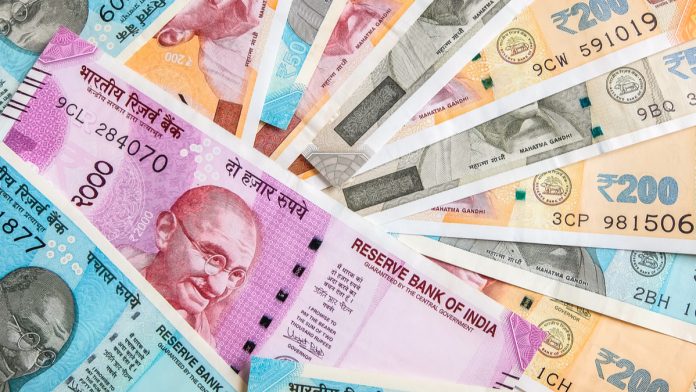- Indian Rupee (INR) is rising after a flat end yesterday
- India’s composite PMI rose to a 14-year high
- US Dollar (USD)falls versus its major peers
- US composite PMI unexpectedly falls
The US Dollar Indian Rupee (USD/INR) exchange rate is falling after a flat session yesterday. The pair was flat at 0% in the previous session, settling on Monday at 83.36. At 19:00 UTC, USD/INR trades -0.11% at 83.26 and trades in a range of 83.25 to 83.39.
The Rupee is pushing higher after data showed that India’s business activity expanded at the fastest pace in almost 14 years in April owing to strong demand. The HSBC flash composite PMI rose to 62.2 in April, up from 61.8 in March.
The data suggested India is well placed to remain the fastest-growing major economy this year, following strong expansion over the past few quarters. The data also showed easing input inflation and positive job growth.
The service sector led the expansion, with the services PMI rising to a three-month high of 61.7, up from 61.2.
The US Dollar is falling across the board. The US Dollar Index, which measures the greenback versus a basket of major currencies, trades at -0.43% at the time of writing at 106.13 after modest gains yesterday.
The US dollar is falling amid an improved market and after better-than-expected US business activity data.
The US composite PMI, which is considered a good gauge for business activity, fell to 50.9 in April from 52.1 in March. The data showed that both the manufacturing and services sectors fell, with manufacturing PMI dropping to 49.9, just under the level 50, which separates expansion from contraction. Meanwhile, the US services PMI fell to 50.9 from 51.7.
The data suggests that the US economic economy lost some momentum at the start of the second quarter, and further pace may be lost in the coming months as April, so a fall in new business inflows for the first time in six months.
Meanwhile, the more challenging business environment has caused companies to cut employee numbers at a rate that hasn’t been seen since the financial crisis, excluding the pandemic lockdown months.
Looking ahead, attention will be on tomorrow’s US durable goods orders for more clues about the health of the US economy before the GDP data on Thursday.





